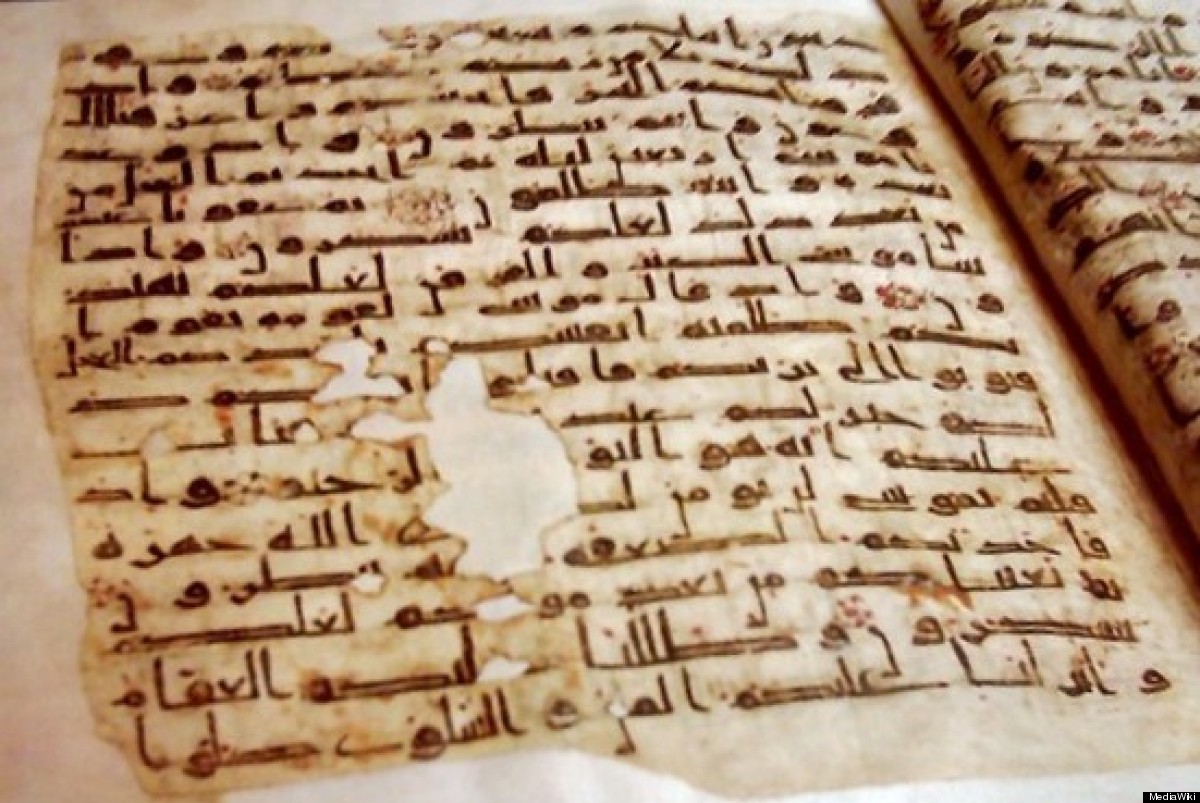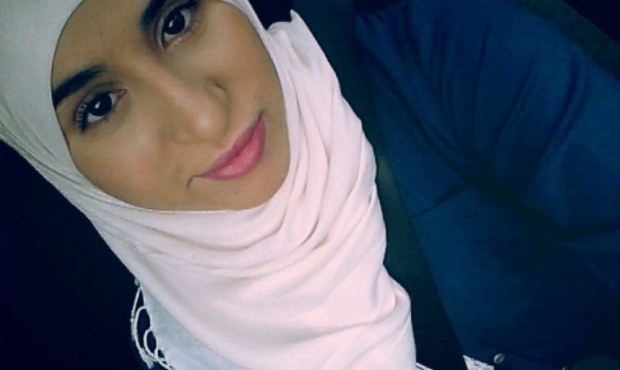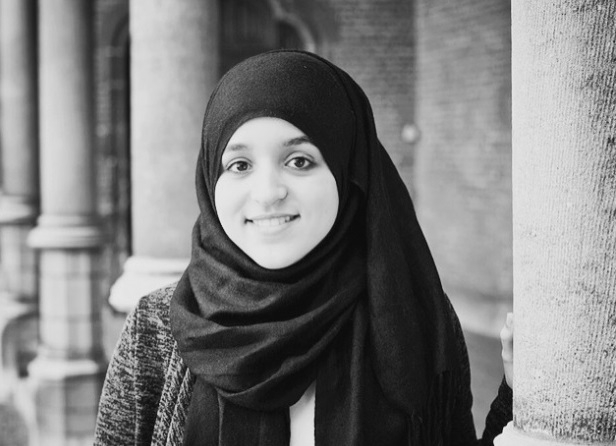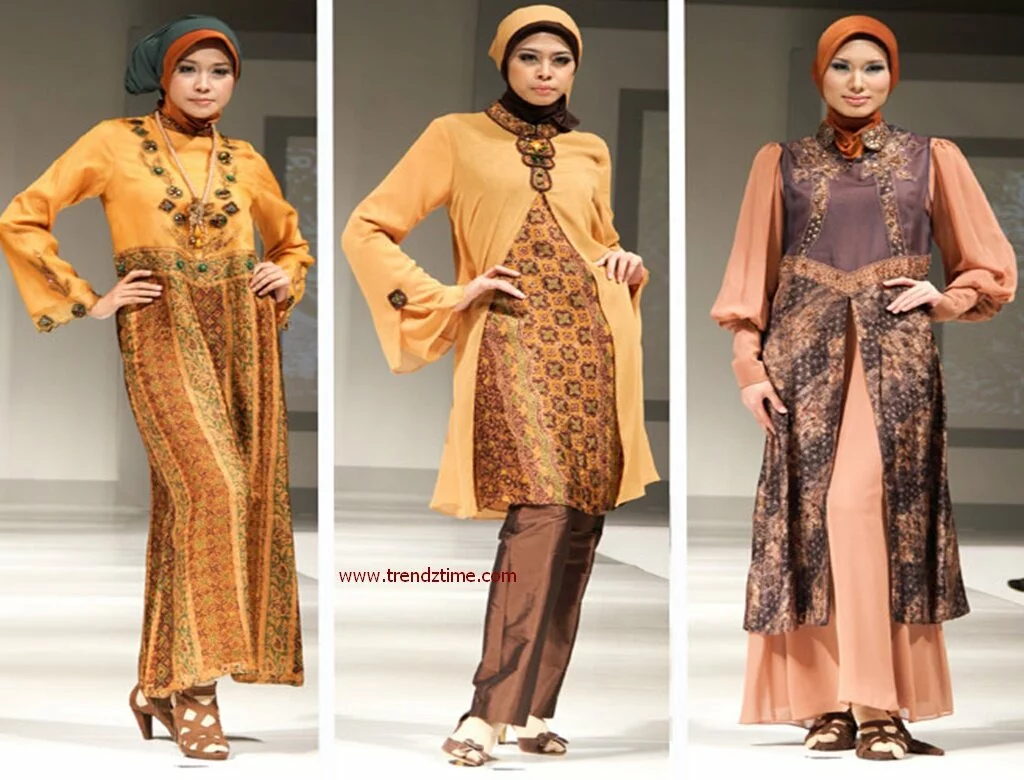
Sunday, October 4, 2015
Saturday, August 22, 2015
Saturday, June 6, 2015
Amal Shaaban Abdel-Monem Elshami Faculty: Nursing Ph.D.
Best Theses Awards, Cairo University (BTACU) Issue VII, Nov. 2014
Information System Unit 28 http://gsrd.cu.edu.eg
Name: Amel Shaaban Abdel-Monem Elshami
Faculty: Nursing Dept.: Maternal and Newborn Health Nursing Degree: Ph. D.
Title of Thesis: Impact of a structured prenatal counseling on anxiety level among women undergoing intrauterine interventional procedures
Supervisors: Prof Prof. Dr. Mohamed Momtaz,
Dr. Shadia Abdelkader
Prof. Dr. Zienab Abdelhalim
Dr. Sherif Mohamed Maher Negm
Abstract : Intrauterine interventional procedures (IUIP) during pregnancy are usually accompanied with higher level of anxiety related to anticipated pain, possible harm to pregnancy and testing results. The aim of the study was to examine the impact of a structured prenatal counseling on anxiety level among women undergoing IUIP. Non-equivalent pre-post test Quasi experimental research design was utilized.
http://www.gsrd.cu.edu.eg/nursing/Amel_%20Shaaban_%20Abdel-Monem%20_Elshami.pdf
Name: Amel Shaaban Abdel-Monem Elshami
Faculty: Nursing Dept.: Maternal and Newborn Health Nursing Degree: Ph. D.
Title of Thesis: Impact of a structured prenatal counseling on anxiety level among women undergoing intrauterine interventional procedures
Supervisors: Prof Prof. Dr. Mohamed Momtaz,
Dr. Shadia Abdelkader
Prof. Dr. Zienab Abdelhalim
Dr. Sherif Mohamed Maher Negm
Abstract : Intrauterine interventional procedures (IUIP) during pregnancy are usually accompanied with higher level of anxiety related to anticipated pain, possible harm to pregnancy and testing results. The aim of the study was to examine the impact of a structured prenatal counseling on anxiety level among women undergoing IUIP. Non-equivalent pre-post test Quasi experimental research design was utilized.
http://www.gsrd.cu.edu.eg/nursing/Amel_%20Shaaban_%20Abdel-Monem%20_Elshami.pdf
Monday, June 1, 2015
Egyptian Student Invents New Propulsion Method. Aisha Mustafa
Aisha Mustafa patented her invention last February in ASRT.
An Egyptian physics student has successfully created a new propulsion device that could accelerate space probes and artificial satellites through quantum physics and chemical reactions instead of the current radioactive-based jets and ordinary rocket engines.
Aisha Mustafa, who has entered the active research area of spacecraft propulsion by her newly invented device, told the governmental EGYNews agency that she patented her invention last February in the Egyptian Academy of Scientific Research and Technology (ASRT).
Mustafa’s propelling device is based upon a scientific mix between quantum physics, space technology, chemical reactions and electrical sciences. Current space probes, artificial satellites, spacecrafts and space vehicles use rocket gas engines that depend on forcing a gas to the outside of the vehicle at a supersonic speed or the chemical reactions rockets which propel by solid or liquid fuels such as radionuclide or petroleum, or the electrically-propelled probes which depend on thrusting force via accelerating ions.
On the contrary, Mustafa’s invention powers space vehicles by benefiting from the electric energy formed by Casimir-polder force which occurs between separate surfaces and objects in a vacuum and by the zero-point energy which is considered to be the lowest state of energy. Mustafa added that she used panels for generating electricity. The invention is related to a hypothetical concept of a jet propulsion called “Differential Sail”, which was theoretically created by NASA’s retired professor Marc G. Millis who led NASA breakthrough propulsion physics project.
In a televised interview with the famous Egyptian morning programme “Sabah El Kheir Ya Masr” (Good Morning Egypt), Mustafa, who studies physics in Sohag University, expressed her appreciation to her faculty and university staff for their efforts in helping and providing her with the materials and resources needed. Yet, at the same time she expressed her depression and sadness for the lack of a space sciences department in the Egyptian universities.
“Departments of astronomy and physics are only available. Although they are related to space sciences but unfortunately they aren’t into the specific field of my invention and they can’t practically test or implement it.”
The 19-year old girl said that lacking of a department for space sciences prevents further national research in this important field and acts as an obstacle for her to continue conducting her studies in this specific area.
According to an Egyptian TV channel, “Egypt 25”, Mustafa’s supervisor, Dr. Ahmed Fikry, who heads the physics department in Sohag University, has shown great interest in his student’s invention and helped her patent it in the ASRT. “I expect this invention to be highly beneficial in several fields and areas of industries,” he assured.
On his behalf, the President of Sohag University, Dr. Nabil Nour Eldin Abdellah, said that the university facilitates what he called “Science Clubs” for intelligent and creative students who have the will and capabilities to come up with innovative scientific ideas.
“Once we knew about her (Mustafa’s) invention, we encouraged her and provided her with the budget needed through the Science Club for innovative students in the university. This is the case with any other creative student,” Abdellah explained.
Future of Space Travel
 |
Events like the retirement of NASA’s vehicle of space shuttle programme and the need for new methods for space travel at a faster, safer, cheaper and easier means pushes forwards conducting more and more researches in the field of space vehicles propulsion.
Currently, there are dozens, if not hundreds, of ideas for innovative propulsion systems which are either presently in use or in progress, or which are still eras or even a millennium-far away from our modern technologies.
One of these methods for interplanetary and interstellar travels is the “solar sail” which depends on stellar radiation pressure or laser upon ultra-thin mirrors which work like ship sails. Other accelerating methods make use of the fourth state of matter, “plasma” by thrusting and pulsing.
| An Electromagnetic Catapult in a Lunar settlement |
Mustafa nowadays aims at testing her invention at major scientific research organisations, hence the possibility of applying it in upcoming space missions.
In the next coming decades, space travel would be easier, safer, faster and cheaper, thanks to the mind of an Egyptian girl.
Saturday, May 30, 2015
Saturday, May 23, 2015
Hoda Kotb and Kathie Lee NBC Today Show


http://www.today.com/popculture/kelsea-ballerini-performs-new-single-klg-hoda-t22306
Nusayba bint Ka'b Al-Ansariyah
Nusayba was of one of the first advocates for the rights of Muslim women. Notably, she asked the Prophet Muhammad, "Why does God only address men (in the Quran)?" Soon after this exchange, the Prophet received a revelation in Chapter 33, Verse 35 that mentions women can attain every quality to which men have access. The verse also conclusively settled that women stand on the same spiritual level as men. She was viewed as a visionary who transcended her own generation.


Friday, May 22, 2015
Iranian swimmer Elham Asghari: 'My 20km record has been held hostage'

On a Tuesday morning in June, Elham Asghari stepped into the tidal waters of the chilly Caspian sea in northern Iran to swim 20km in full Islamic dress. But her record-breaking nine-hour feat has not ...
https://plus.google.com/103369008302500421163/posts
Thursday, May 21, 2015
Physical education for Saudi girls stirs debate
Physical education for Saudi girls stirs debate
 |
| Reuters |
A step to introduce physical education for girls at Saudi government schools has become the talk of the town in the kingdom, with many hailing it as a positive development and some slamming it as a threat to social values.
Last week, the government advisory Shura Council called on the country’s education ministry to look into including sports for girls at state-run schools on condition that they are in line with Sharia rules on dress and gender segregation, according to the Saudi Press Agency.
Meanwhile, Mohammed al-Saleh, secretary-general of the Higher Education Council, told makkahnewspaper.comMonday that the next move would be to recruit sports educators from abroad.
A previous ban on physical education for girls was relaxed in private schools in 2013. The Shura Council’s demand last week to include state-run schools has been welcomed internationally both by the International Olympic Committee and Human Rights Watch.
“It’s a good sign that Saudi authorities appear to realize letting all girls in Saudi Arabia play sports is important to their physical and mental wellbeing,” Sarah Leah Whitson of Human Rights Watch told Agence France Presse.
Al-Watan newspaper published a column on Monday with a title that read: “Would you marry a girl who practiced sports?” The columnist criticized and mocked opponents of the move.
He quoted a two-year old study showing that three-quarters of the country’s population suffered obesity and 75 percent of the women are obese and that 80 percent of secondary diabetes cases were related to obesity.
The article dismissed conservative voices that are critical of making girls play sports at schools. Some conservative clerics had denounced the move as a “Western innovation,” according to the Wall Street Journal.
One cleric Abdullah Al Dawood even tweeted that “these steps will end in infidelity and prostitution.”
Speaking to Al Arabiya News from Jeddah, veteran Saudi journalist Omar al-Mudwahi said there was nothing new in the clerical opposition to the move. “The religious institution has always stood against the advancement of women’s rights.”
Abdullah Hamidaddin, a Saudi writer and commentator on religion and politics, wrote in a recent column on Al Arabiya news that the Shura Counci’s move “is not a decision about girls practicing sports. Nor is it one about women rights. This is a decision to push back the authority of the religious institution.
“The easiest way to explain what happened is to say that there are zealots whose interpretation of Islamic scripture is misogynic and thus believe that the only option women have is to lie down and die. Thus the government decided to intervene and give women some hope of a natural life,” Hamidaddin added.
Journalist Mudwahi noted that the plan to introduce physical education for girls in public schools is part of comprehensive government response to high obesity rates among women.
“Municipalities across the kingdom are also creating long pedestrian walkways special for women especially after repeated health ministry figures showing high obesity and diabetes rates among women,” he said.
“Previously all physical education centers are extensions of hospitals as if it is a disease, as if female sports is a disease and it is very expensive,” al-Mudwahi said.
“As a man, it would cost me 300 riyals ($80) per month to go to gym. But it would cost my wife or my daughter about 1000 riyals ($266),” he explained.
He noted that unlike universities, most schools in the primary and secondary education are not equipped with physical education facilities for girls.
“This issue has been passed in the Shura Council, but the important question remains: Are our schools ready for such thing? Of course no,” he said. But within a few years, most schools are likely to have physical education facilities if there is a legal framework for girls to practice sport.
The Saudi Shura Council move is seen as another step empowering women during the reign of King Abdullah, after appointing women into the legislative Shura Council and allowing them to practice different professions which weren’t allowed before such as law.
Source: http://english.alarabiya.net/en/perspective/features/2014/04/15/Physical-education-for-girls-stirs-debate-in-Saudi-Arabia.html
Muslim Women of Europe in Sports

Khadijah Safari, teaches Muay Thai Kickboxing and Mixed Martial Arts (MMA) to women in the UK
///
 Sara Chaudhry: "I have learned to feel more empowered wearing my hijab in my current surroundings"
Sara Chaudhry: "I have learned to feel more empowered wearing my hijab in my current surroundings"///
 Kawtar Boughroum "Why does it bother people so much that I cover my head?"
Kawtar Boughroum "Why does it bother people so much that I cover my head?"///
 Yasmien. N. "My hijab made me realize how important it is to be independent and to work things out myself."
Yasmien. N. "My hijab made me realize how important it is to be independent and to work things out myself."
The collection of news and articles on Muslim women and sports around the world. I decided to create the blog after I started doing research on the subject and recognized the lacuna of a central repository of collected materials about Muslim women's involvement in physical activities. -Sertaç Sehlikoglu
http://www.middleeasteye.net/in-depth/features/muslim-women-and-their-experiences-wearing-hijab-europe-2027900557
///
http://muslimwomeninsports.blogspot.com/
Thursday, May 14, 2015
Saturday, May 2, 2015
Muslim Women Super Achievers Paul and Daisy Soros Fellowship for New Americans
Amal ElBakhar
JD at Harvard

Asmaa Elsayed
EdM in Global Education at Harvard
Ayan Hussein
Ph.D. in Neuroscience at Yale
Sahar Soleimanfard
MD at Johns Hopkins
Date: Tuesday, April 14, 2015
Contact: Nikka Beaugard. 215-720-4648, Nbeaugard@PDSoros.org
NEW YORK - Today, The Paul & Daisy Soros Fellowships for New Americans, the premier graduate school fellowship for immigrants and children of immigrants, announced their 2015 recipients. The thirty recipients, called "Fellows", were selected for their potential to make significant contributions to US society, culture, or their academic field, and were selected from a pool of 1,200 applicants.
"I admire the Fellows' ambition, accomplishments and work ethic," said Daisy M. Soros, who co-founded the Fellowship program in 1997 with her late husband, Paul Soros (1926-2013). "They underscore the importance of New Americans to this country." The couple, Hungarian immigrants, contributed $75 million to the organization's charitable trust.
In addition to receiving up to $90,000 in funding for the graduate program of their choice, each new Fellow will join the prestigious community of recipients from past years, which includes US Surgeon General Vivek Murthy, leading Ebola researcher Pardis Sabeti, Oscar health insurance co-founder Kevin Nazemi and over 500 other New American leaders.
"It is extraordinary to see all that these Fellows have already accomplished," said Craig Harwood, who directs the Fellowship program. "Whether they are in the sciences, music, medicine, law or education, it is clear that this group of individuals will have a tremendous impact on their respective fields, and on life in this country."
The 2015 class of Fellows includes researchers, mathematicians, writers, scientists, translators, musicians, entrepreneurs and future doctors and lawyers, as well as the first-ever Paul & Daisy Soros Fellow in the field of nursing. They hail from China, Vietnam, Iran, Nigeria, Somalia, the United Arab Emirates, Uzbekistan, Albania, Ukraine, Morocco, El Salvador, Mexico, Colombia, Libya, Poland, Russia, Peru, Israel, Oman, Brazil and the United States.
Connect with the Fellowship on Social Media
Facebook: https://www.facebook.com/pdsoros
Twitter: @PDSoros
Instagram: @PDSoros
2016 Application Now Open
Individuals can learn more about the Fellowship, the current Fellows and the application, as well as sign up for the Fellowship's e-mail list, and an informational session webinar, at the program's website: www.pdsoros.org. The 2016 application is now open, and is due on November 1, 2015 at 11:59 EST.
Selection criteria focuses on accomplishments that show creativity, originality, and initiative in light of the challenges and opportunities that have been part of the applicant's immigration experience. The application is open to college seniors, students in the early stages of their graduate career, and those in the workforce who are seeking graduate training.
Full List of 2015 Fellows
Name, heritage, degree sought and university
JD at Harvard

Asmaa Elsayed
EdM in Global Education at Harvard
Ayan Hussein
Ph.D. in Neuroscience at Yale
Sahar Soleimanfard
MD at Johns Hopkins
Thirty Outstanding New Americans
Each Awarded $90,000 Toward Their Graduate School Studies in US By Paul &
Daisy Soros Fellowships
The Paul & Daisy Soros
Fellowships for New Americans program announces 2015 Fellows;
Awards $2.7 million to support immigrants and the children of immigrants
Awards $2.7 million to support immigrants and the children of immigrants
Date: Tuesday, April 14, 2015
Contact: Nikka Beaugard. 215-720-4648, Nbeaugard@PDSoros.org
NEW YORK - Today, The Paul & Daisy Soros Fellowships for New Americans, the premier graduate school fellowship for immigrants and children of immigrants, announced their 2015 recipients. The thirty recipients, called "Fellows", were selected for their potential to make significant contributions to US society, culture, or their academic field, and were selected from a pool of 1,200 applicants.
"I admire the Fellows' ambition, accomplishments and work ethic," said Daisy M. Soros, who co-founded the Fellowship program in 1997 with her late husband, Paul Soros (1926-2013). "They underscore the importance of New Americans to this country." The couple, Hungarian immigrants, contributed $75 million to the organization's charitable trust.
In addition to receiving up to $90,000 in funding for the graduate program of their choice, each new Fellow will join the prestigious community of recipients from past years, which includes US Surgeon General Vivek Murthy, leading Ebola researcher Pardis Sabeti, Oscar health insurance co-founder Kevin Nazemi and over 500 other New American leaders.
"It is extraordinary to see all that these Fellows have already accomplished," said Craig Harwood, who directs the Fellowship program. "Whether they are in the sciences, music, medicine, law or education, it is clear that this group of individuals will have a tremendous impact on their respective fields, and on life in this country."
The 2015 class of Fellows includes researchers, mathematicians, writers, scientists, translators, musicians, entrepreneurs and future doctors and lawyers, as well as the first-ever Paul & Daisy Soros Fellow in the field of nursing. They hail from China, Vietnam, Iran, Nigeria, Somalia, the United Arab Emirates, Uzbekistan, Albania, Ukraine, Morocco, El Salvador, Mexico, Colombia, Libya, Poland, Russia, Peru, Israel, Oman, Brazil and the United States.
The 2015 cohort of Fellows is extremely diverse in
terms of family heritage, field of study and New American status:
- 16 are female; 14 are male.
- The youngest Fellow is 21; the oldest is 30. The average age is 26.
- 22 were born abroad; 8 were born in the US.
- 2 are DACA recipients; 5 are green card holders; 15 are naturalized citizens.
- 13 Fellows are pursuing medicine; 7 natural science; 4 law; 3 music, visual and/or performing arts; 2 computer science; 2 business ; 1 social science and 1 education. 3 Fellows are currently pursuing more than 1 degree.
- 14 are first-generation college graduates; 10 are first-generation high school graduates.
- The Fellows attended a total of 23 undergraduate institutions, and will attend a total of 14 graduate schools.
Connect with the Fellowship on Social Media
Facebook: https://www.facebook.com/pdsoros
Twitter: @PDSoros
Instagram: @PDSoros
2016 Application Now Open
Individuals can learn more about the Fellowship, the current Fellows and the application, as well as sign up for the Fellowship's e-mail list, and an informational session webinar, at the program's website: www.pdsoros.org. The 2016 application is now open, and is due on November 1, 2015 at 11:59 EST.
Selection criteria focuses on accomplishments that show creativity, originality, and initiative in light of the challenges and opportunities that have been part of the applicant's immigration experience. The application is open to college seniors, students in the early stages of their graduate career, and those in the workforce who are seeking graduate training.
Full List of 2015 Fellows
Name, heritage, degree sought and university
- Mohamad Abedi, Palestinian, PhD in bioengineering at CalTech
- Oswaldo (Oz) Hasbún Avalos, El Salvadorian, MD at Columbia University
- Cecil Benitez, Mexican, MD at Stanford Medical School
- Shinichi Daimyo, Vietnamese and Japanese, MSN at Yale School of Nursing
- Daniela Delgado, Colombian, MD at Harvard Medical School
- Amal Elbakhar, Moroccan, JD at Harvard Law School
- Asmaa Elsayed, Egyptian, EdM in global education at Harvard Graduate School of Education
- Arash Fereydooni, Iranian, MD
- Krzysztof Franaszek, Polish, MD at Harvard Medical School and MIT
- Ledina Gocaj, Albanian, JD at Harvard Law School
- Tiffanie Hsu, Chinese and Taiwanese, MFA in directing at UCLA
- Ayan Hussein, Somalian, PhD in neuroscience at Yale University
- Evgeniya Kim, Uzbek and Korean, MBA at Yale School of Management
- Allen Lin, Taiwanese, PhD in systems biology at Harvard University
- Ismael Loera Fernandez, Mexican, PhD in chemistry at Rice University
- Paras Singh Minhas, Indian, MD and PhD in neuroscience at Stanford School of Medicine
- Polina Nazaykinskaya, Russian, DMA in composition and music theory at The Graduate Center, CUNY
- Minh-Duyen Thi Nguyen, Vietnamese, MD
- Lucy Ogbu-Nwobodo, Nigerian, MD at UC Davis School of Medicine
- Sandra Portocarrero, Peruvian, PhD in sociology at Columbia University
- Yakir Reshef, Israeli, MD and PhD in computer science at Harvard Medical School and MIT
- Raeuf Roushangar, Egyptian and Iranian, PhD in biochemistry and molecular biology at Michigan State University
- Eugene Rusyn, Russian, JD at Yale Law School
- Andre Shomorony, Brazilian, MD at Harvard Medical School and MIT
- Sahar Soleimanifard, Iranian, MD at Johns Hopkins School of Medicine
- Stephanie Speirs, Korean and Chinese, MBA at MIT Sloan School of Management
- Gerald Chunt-Sein Tiu, Burmese, MD and PhD in genetics at Stanford University
- Katherine Karmen Trujillo, Honduran, MA in law and diplomacy at The Fletcher School at Tufts University
- Mark Minghao Xue, Chinese, MS in computer science at Stanford University
- Julie Zhu, Chinese, MFA in painting at Hunter College, CUNY
Friday, May 1, 2015
Tuesday, April 21, 2015
Tuesday, March 10, 2015
Thursday, February 26, 2015
Friday, January 30, 2015
Feeling Un-welcome at Mosques, 2 Women Start Their Own in L.A.
Feeling Unwelcome at Mosques, 2 Women Start Their Own in L.A.
New Entity Believed to Be the First of Its Kind in the U.S.
..New Entity Believed to Be the First of Its Kind in the U.S.
 ENLARGE
ENLARGE
Zaiba Omar, left, and Hasna Maznavi, right, hang banners for the Women's Mosque of America’s first service this week. PHOTO: STUART PALLEY FOR THE WALL STREET JOURNAL
LOS ANGELES—When Hasna Maznavi would show up to pray at her Southern California mosque, even during off hours, the few men in the main hall would gently point her upstairs to a separate area for women.
“I started to feel unwelcome,” said the 29-year-old comedy writer and film-school graduate.
To Ms. Maznavi and fellow Muslim Sana Muttalib, a 31-year-old lawyer, the traditional separation was more than physical. Muslim women across the country, they believed, seemed disconnected from their scholarly heritage, and too few had leadership roles in their mosques.
So Ms. Maznavi and Ms. Muttalib decided to start their own mosque—one for women only.
On Friday, when they gather in Los Angeles for the first Friday prayer service at the new Women’s Mosque of America, worshippers won’t enter through a side door or have to sit in the rear. The call to prayer, traditionally performed by a man, will be given by a woman, as will the sermon.
 ENLARGE
ENLARGE
Sana Muttalib, left, and Zaiba Omar in the Pico-Union Project while setting up for the Women's Mosque of America’s first service in Los Angeles on Thursday. PHOTO:STUART PALLEY FOR THE WALL STREET JOURNAL
The women may also be making history. While female-only mosques exist in China, Islamic scholars and Muslim leaders here said they know of no other such mosque in the U.S.
“This is a hugely important, symbolic moment,” said Edina Lekovic, a 37-year-old Muslim activist from Pasadena who is giving the sermon. “It’s American Muslim women organizing and creating a space for their own spiritual nourishment by and for themselves.”
Some mosques draw on members of the lay community to lead prayer and give sermons, especially as American Muslims grapple with a shortage of trained imams. And it’s not uncommon for Muslim women to lead women in prayer in small, informal groups. But offering Friday prayers—the major service of the week—is a notable step.
Many younger Muslims raised in the U.S. are agitating for broader changes to mosques, or turning away from traditional mosques in favor of their own “third spaces.” This comes as more mosques arepopping up to meet demand from the rising Muslim population in the U.S., and at a time when the community is under increasing scrutiny after deadly terrorist attacks abroad linked to Islamic radicals.
The traditional separation of men and women, compounded by traditions carried over from immigrants’ home countries and the Islamic imperative for men to attend Friday prayers, has created a striking imbalance in American mosques, Muslim leaders, women and academics said. According to study released in 2013 from the Islamic Society of North America, U.S. mosques reported attendance at Friday prayers on average was 18% female. Most mosques in the study scored fair or poor on a “women-friendly” scale.
 ENLARGE
ENLARGE
Zaiba Omar, treasurer and board member at the Women's Mosque of America tapes down rolls of fabric for use in the mosque's first service this week. PHOTO: STUART PALLEY FOR THE WALL STREET JOURNAL
“The mosque will have to evolve to become more inclusive of women if it wants to remain relevant,” said Hind Makki, a 35-year-old Muslim woman in Chicago who consults with mosques on inclusion.
There is general agreement among various schools of Islamic thought that women can lead other women in daily prayers, said Jihad Turk, an imam and president of Bayan Claremont, the Islamic graduate school at Claremont School of Theology in Southern California. He noted there is precedent in Muslim history of female scholars and teachers, including the Prophet Muhammad’s wife, who led women in prayer.
But Islamic scholars are less in agreement over whether women can lead the special Friday prayer that is proceeded by a sermon. One solution might be to perform the regular daily prayer in addition to the Friday prayer to fulfill Islamic obligation, scholars suggested.
“This is something that has no precedent in history or tradition,” Muslim American scholar Furhan Zubairi wrote in a piece posted online Friday about the Women’s Mosque, referring to women leading the special Friday prayer. “The issue of precedence isn’t something that should be taken lightly.”
But Mr. Zubairi said there is “nothing wrong with having a Women’s Mosque,” saying women should have “spaces where they feel safe, welcomed and respected.”
Mr. Turk said he has heard from a few conservative leaders who have expressed concerns over “whether this is somehow a slap to the face of the established community.” Some people, he added, “might take offense, and some are saying you should just work with the community [for change] instead of creating your own.”
Nearly two years ago, Ms. Makki launched Side Entrance, a website where Muslim women post photos of women’s entrances and worship space at mosques around the world. It began when Ms. Makki ducked into a mosque to pray and posted a photo of the cramped women’s area on her
Facebook
page. Her female friends commiserated, she said, but her “male friends were shocked. Most men don’t know where their sisters, wives or moms go to pray.” ENLARGE
ENLARGE
The Pico-Union Project, where the Women's Mosque of America will hold its first services this week in Los Angeles. PHOTO: STUART PALLEY FOR THE WALL STREET JOURNAL
She said she is hopeful the new women’s mosque will “bring this issue to the forefront. If women are feeling so excluded that they’ve created their own mosque, that shows you how desperate the situation is across the nation.”
For now, members of the Women’s Mosque will gather in a former synagogue that is now a multifaith center, in an industrial neighborhood just off downtown L.A. Its founders say it will serve as a “complement” to worshippers’ home mosques, not as a replacement. They hope to offer classes on the Quran, host female Islamic scholars and encourage women to take more active roles.
“This is a place where Muslim women can come and experience inspiration and then return with that to their communities,” Ms. Maznavi said. “We would love to not have to exist.”
e women sit on their knees, watching intently as a slightly sheepish sister in a pink head scarf crosses the beige floor and approaches the dais. After a moment, her jitters are gone and, in a booming voice, she recites the Islamic call to prayer.
In what may have been a unique moment in America, more than 100 women gathered Friday at the interfaith Pico-Union Project. While many mosques continue to follow a tradition of separating women from male congregants, the downtown Los Angeles mosque forbids men from attending.
Female-only mosques may exist in China, Chile and India, but Muslim leaders say this could be the first in the U.S.
The inaugural prayer Friday marked the launch of the Women's Mosque of America, a nonprofit that hopes to create a space where Muslim women can "bring their whole self," learn more about their faith and foster bonds of sisterhood.
"Muslim women haven't had a forum," Yasmeen Ruhge, a cardiologist from Pasadena, said as she waited for the service to begin. "When we go to the mosque we have to sit on one side. Not that we aren't equal, but this gives us a freedom to talk as all women and create an independent role."
About two-thirds of U.S. mosques use a divider to separate men and women during morning prayers, according to a 2011 study on American mosques co-sponsored by the Islamic Society of North America. That figure could be higher for Friday prayers, the study said.
Because many spaces for women in many mosques are not as appealing or accessible as the areas for men, an open environment is integral for growth, said Sana Muttalib, co-president of the women's mosque. Often, women are forced to enter through side or back doors to reach their segregated areas, she explained.
In most mosques, women are hard-pressed to find the opportunity to ask the imam questions after prayer. But on Friday, a female speaker (or khateeba) addressed women's issues and held a discussion circle after the prayer service.
Many women expressed their gratitude at the chance to share their thoughts. Some cried and called the experience liberating.
But a lack of female perspective isn't unique to the Muslim community, said M. Hasna Maznavi, who started the organization with Muttalib. Although the prayer space is for women only, other events and classes will be open to men.
"When only half of the membership is contributing to the success of the whole, we're not going to be as well-off as we could be," she said.
The new mosque has been embraced around the globe, not just nationally, Muttalib said. She said support has come, not only from women eager to learn more or hoping to start their own chapter, but from men.
The call for female empowerment in the Muslim community has been growing for years — a response aimed at combating an often-misguided view of Islam, experts say.
"One of the major ways that Islam is 'othered'— one of the major stereotypes — is how they treat women," said Ruqayya Khan, chairwoman of Islamic studies at Claremont Graduate University. "But there is a rich history of women in Islam, and it's often kind of sidelined or buried."
Both Muslim women and men can work to reclaim the importance of those female figures, she said. Female empowerment is an important step, Khan said, because it is not an "in-your-face, radical" move, yet it still supports female Muslim leaders.
"Maybe out of this space we could find a woman who is able to think in terms of reform in Islam," she said. "Maybe we could get a female Luther out of this. Wouldn't that be exciting?"
For Ani Zonneveld, head of Muslims For Progressive Values, the new mosque presents an opportunity to help women feel more comfortable and set an example for future generations.
"It's about spiritual leadership," Zonneveld said. "When women bring their young boys and they see women leading the prayer, they can initiate change as they grow up."
http://www.wsj.com/articles/muslim-women-to-launch-their-own-mosque-1422639983
Subscribe to:
Posts (Atom)




 p
p

